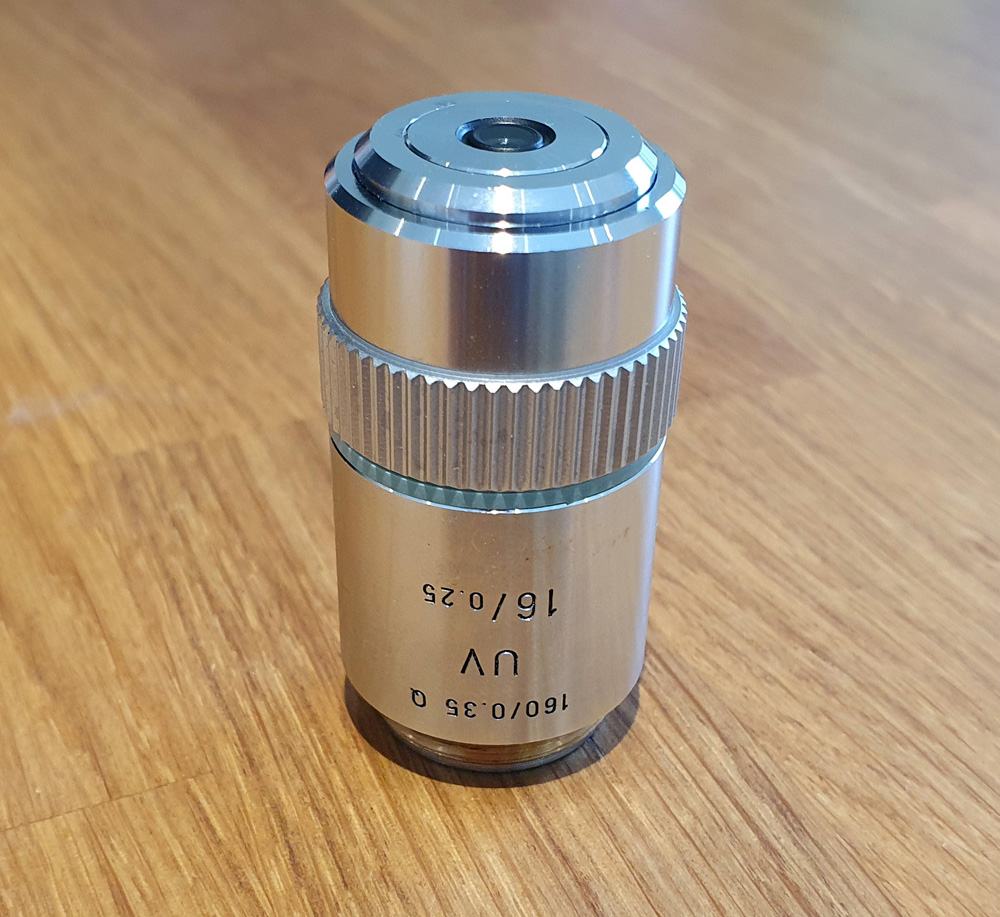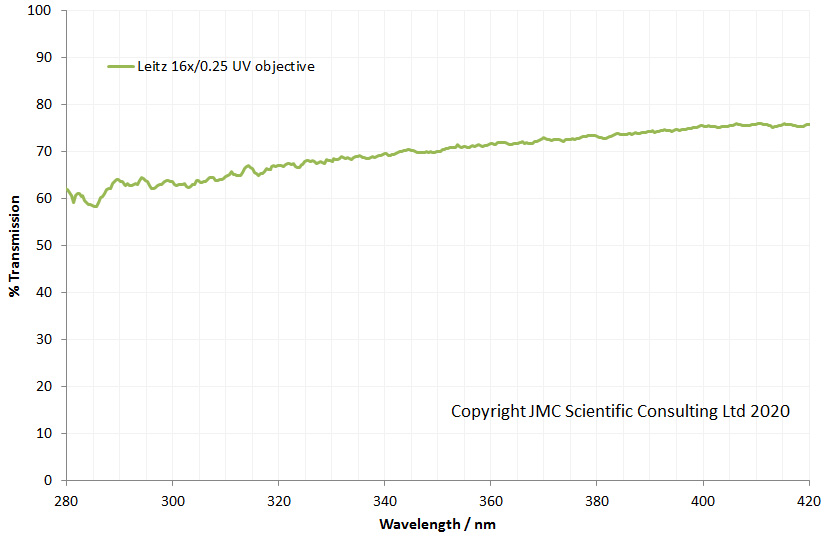For my UV imaging research I regularly look out for second hand equipment, as new UV imaging stuff, especially UVB capable kit, can be hugely (eye-wateringly) expensive. I recently saw this one advertised. It’s a Leitz 16x microscope objective, marked up as UV on the barrel of the lens.

Interestingly for my work, the markings said it was designed for 160mm tube microscopes (which is what I have) and for 0.35mm Quartz coverslips. Now, quartz coverslips aren’t your normal microscope equipment, and would imply that this is meant for deep UV work (at 300nm and even below). The vendor wasn’t able to tell me much about it, other than it came from a piece of equipment he had stripped for selling a while ago. So I made and offer which was accepted, and it started the long journey of making it here to the UK from the US. I wasn’t able to find anything out about this lens online, so it was a bit of a gamble, although the lack of information often indicates how rare something is.
When it eventually arrived, after the lovely Customs fees had been paid, the first thing I did was measure the transmission through it. And to my excitement this is what I got….

The transmission curve was very flat from 280nm to 420nm, indicating that this was indeed a lens designed for use at short wavelengths. Quite a few lenses will transmit light in the UVA region from 400nm down to around 350nm, but below that things get tricky. This Leitz lens doesn’t have any actual glass in it, and the elements are probably either quartz or calcium fluoride (or perhaps both) which is why it transmits so far into the UV.
The next step for me was to mount it on a camera and see what the images were like. I mounted this on my UV converted Nikon d810, and imaged a Buttercup flower using my Hamamatsu LC8 Xenon light source for illumination. Using 6.5cm of extension tubes meant that the final magnification was about 9x, rather than the full 16x. I focused in on the part of the Buttercup petal where it goes from black to yellow in the UV image (the UV world looks very different to the visible world for many things), and this is what I saw.

The first thing to note is that the lens does indeed transmit the UV well, and the region of the petal which absorbs UV strongly (in black) can easily be seen. This is a single image, not stacked, and there is some pretty severe field curvature on it, which is not surprising given there are no other compensating optics being used. Also the magnification would be higher with the correct length extension tubes, which would crop the field of view and flatten the image. Focus stacking would help as well by creating a much sharper image. Amazingly the objective seems to be achromatic between the UV and visible, as almost no focus shift was needed between using the camera viewfinder to focus it and taking the picture in UV. This is very handy for using it and a nice feature to have.
The UV converted d810 camera I have is mainly UVA sensitive, however I also have monochrome converted cameras which are UVB sensitive. So the next thing will be to build an inline optical filter system, so I can start using it in the UVB region. Not a simple task, but science is all about challenges and finding ways to overcome them isn’t it….
I certainly got a bit lucky finding this one. It just goes to show, that sometimes it’s worth taking a gamble to push your work forward. They wont all pay out, but that’s not the point. Without pushing the edges of your research, how can you expect to learn anything new. If you want to know more about my work and the areas I am researching, please contact me here.
